Fungal infection or dermatomycosis is a disease caused by various types of fungi. In terms of frequency of skin lesions, they rank second after pyoderma. Due to its physiological characteristics, the fungus most often affects the lower legs. Many people try to get rid of unpleasant symptoms on their own and look for ways to quickly cure foot fungus at home.
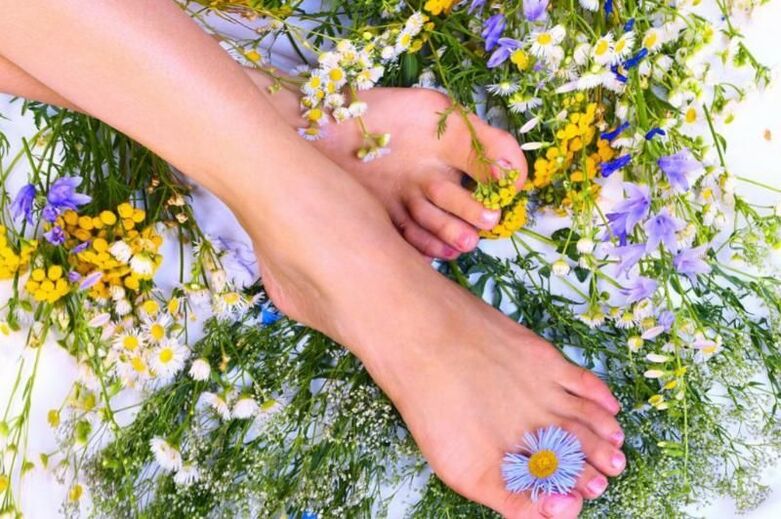
Route of infection
Fungus on the feet affects the stratum corneum of the skin and its appendages - nails. The development of the disease depends on the pathogenicity and virulence of microorganisms, environmental factors and human health conditions. With the same clinical picture, the pathogen can be different types of fungi. Spores are very stable in the external environment (high and low temperatures) and retain the ability to infect for several years.
It is easy to get infected with foot fungus, but you have to fight it for a long time, stubbornly using various methods and means. Foot infections occur when pathogenic spores come into contact with the skin of a healthy person. Main routes of infection:
- sterilization of low-quality instruments in the pedicure room,
- general shoes, hygiene items (cloth, towel).
Causes of athlete's foot infection:
- rooms with high temperature and humidity: shower, sauna, swimming pool, gym,
- increased sweating in the feet,
- the presence of abrasions, micro cracks on the skin,
- not complying with hygiene standards,
- systemic overheating or hypothermia of the feet,
- diseases related to circulatory disorders,
- endocrine pathology caused by metabolic disorders (obesity, diabetes),
- decreased immunity.
Symptoms of fungal infection
There are several types of foot fungus infection clinics.
- The deleted form, where there is slight itching, burning, dryness and peeling in the space between the fingers.
- Squamous. A lot of lamellar peeling occurs in the area of the soles of the feet, in the interdigital folds. With a long course - painful cracks, itching.
- The intertriginous form appears if the squamous stage is not treated. This process begins with the appearance of hyperemia and wet loosening of the stratum corneum of the skin between the fingers. When the macerated area is separated, the eroded surface is exposed, bordered along the edges by soft epidermal fragments. This process involves the area adjacent to the toes and soles of the feet. A person experiences pain when walking, and a secondary purulent infection may develop.
- Hyperkeratotic. Areas with dry nodules and bluish-red plaques, covered with dense scales, are formed. They are significantly different from healthy skin and peel along the perimeter. They are localized on the soles of the feet, moving to the lateral surface of the foot and into the interdigital folds. This form may appear as a yellowish callus with cracks in the upper layer. Symptoms: slight itching, cracking and dry skin.
- The dyshidrotic form mainly affects the soles of the feet. The clinical picture is accompanied by a large bubble with a tight lid. The rash is single or multiple. Blisters may coalesce, form a cortical layer, or open to reveal erosions. As the course progresses, eroded areas form, and when pressure is applied to them, severe pain occurs.
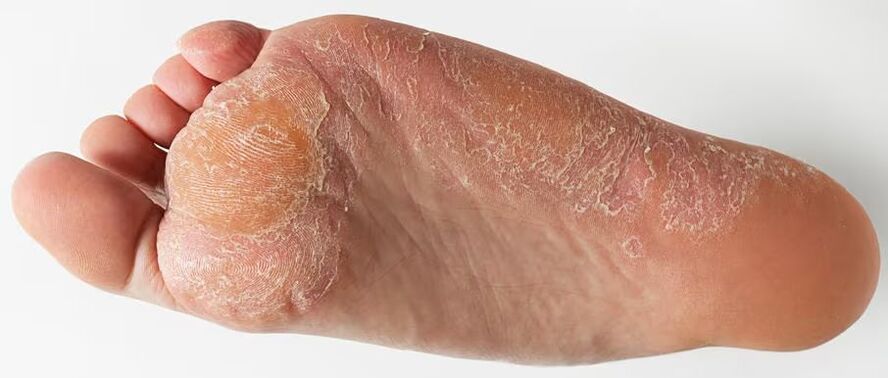
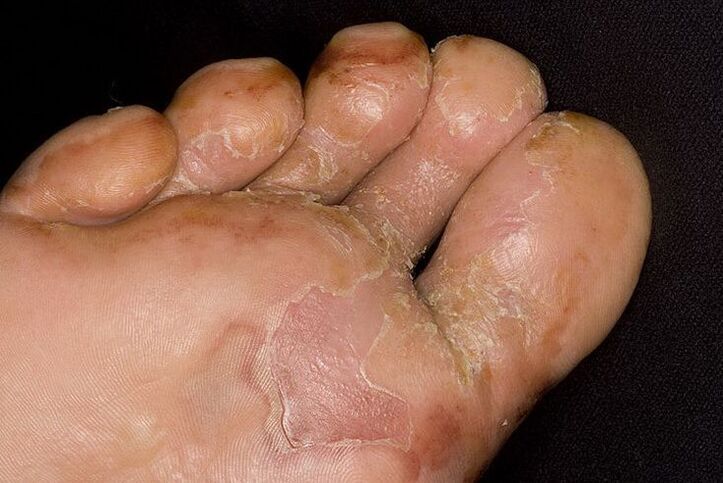
With weeping mycoses, a characteristic sign is the appearance of an unpleasant odor from the feet.
Treatment with folk remedies
People suffered from fungal diseases long before the invention of antifungal drugs, so traditional medicine has accumulated a lot of experience in treating such lesions at home. Even so, it is unlikely that you will be able to quickly overcome the fungus on your own, without consulting a doctor, without special antifungal drugs.
Most of the folk remedies used in the treatment of fungus are ingredients that dry the upper layer of the skin, promote severe peeling of the epidermis, along with fungal spores are removed.

It is impossible to recommend to everyone one of the fastest ways to get rid of this disease. Much depends on the stage of the pathology, the type of fungus, the individual characteristics of the patient's skin, and concomitant diseases.
The use of combination therapy methods has a good effect.
Iodine
To treat foot fungus, this drug is used in the form of an alcohol solution. Iodine is not only a strong antiseptic, but also an oxidizing agent that destroys the mushroom shell and causes denaturation of its constituent proteins. This leads to the rapid death of microorganisms.
Mode of application:
- Pour 3 tablespoons of iodine alcohol solution into a container with 5 liters of hot water (40°C). Do a foot bath for 20 minutes. Course - 7 procedures per day,
- Dilute an alcohol solution of iodine with vodka 1: 1. Treat your skin with this mixture every day before going to bed after washing your feet. This procedure is carried out for 5-10 days, depending on the severity of the symptoms.
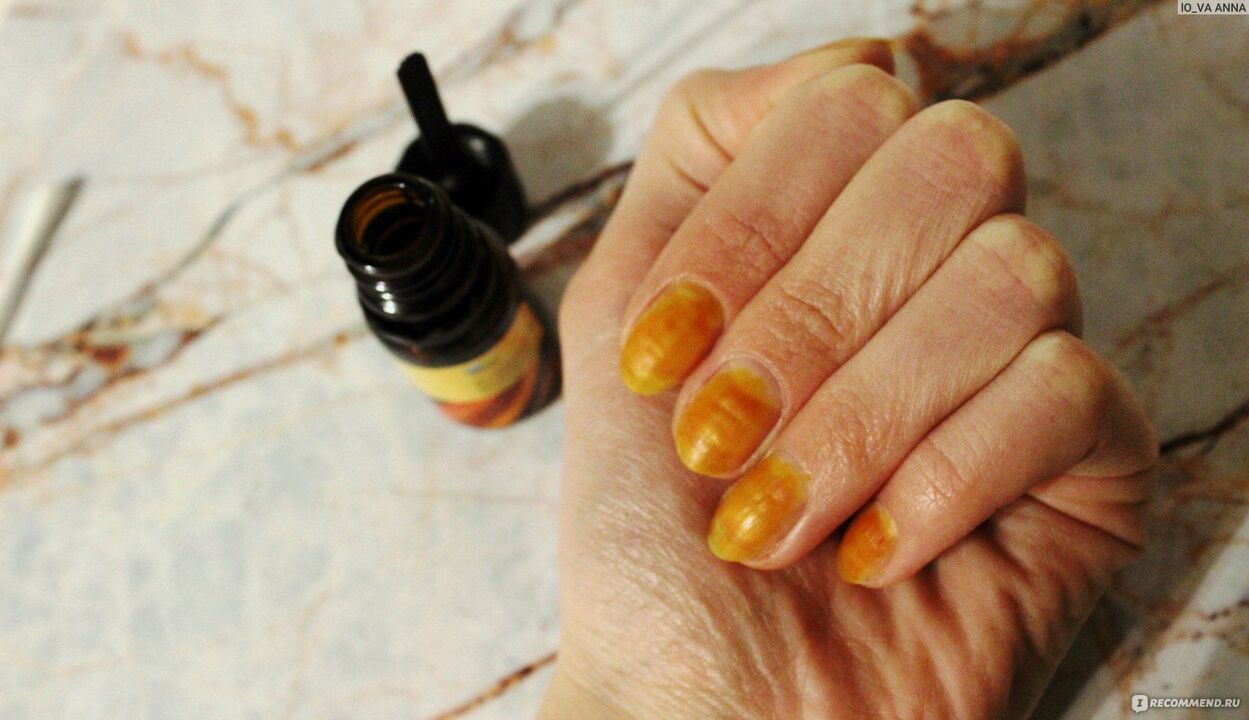
Before starting treatment, it is necessary to test the absence of allergic reactions. . To do this, apply a drop of iodine to the inner surface of the forearm. If no skin changes are observed after 24 hours, you can start the treatment.
Contraindications:
- individual iodine intolerance,
- thyroid disease,
- sensitive skin burns easily.
Hydrogen peroxide
When in contact with the skin, under the influence of the enzyme catalase, hydrogen peroxide decomposes and atomic oxygen is released, which is a strong oxidizing agent.
Free oxygen has antibacterial and antifungal properties. In addition, in the field of action of hydrogen peroxide, conditions are created that are unfavorable for the life of fungi.
A cotton pad soaked in a 3% peroxide solution and applied to the affected area for 10 minutes. If a strong burning sensation occurs, rinse the affected area with running water and lubricate with vegetable oil. Applications are made in the morning and evening for 5 days.
Hydrogen peroxide acts as an antiseptic, prevents fungus from multiplying and spreading to neighboring areas, and reduces unpleasant odors.
Celandine
Traditional medicine uses herbs to treat skin diseases. Celandine is considered one of the best. It is a poisonous plant, so any manipulation should be done with rubber gloves.

- Place 2 tablespoons of dry celandine raw material in a container with 200 ml of water, continue to heat for 10 minutes, strain and add the decoction to the bath water. Lower your feet into the basin for 20 minutes. This procedure is done every day.
- Colored celandine is prepared as follows: add 1 tablespoon of dried celandine inflorescences to 200 ml of vodka. Put in a cool and dark place. After 14 days, strain and use to treat foot fungus, lubricating the affected area 2 times a day.
Concentrated celandine juice should not be used for erosive wounds - this can cause burns to the deep layers of the skin.
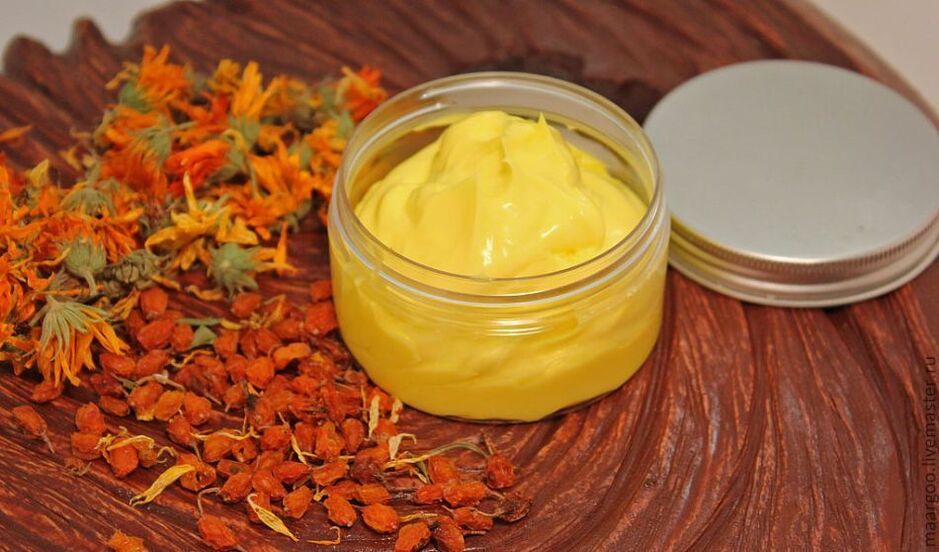
Celandine oil is prepared by mixing freshly squeezed juice with Vaseline in a ratio of 1: 4. The medicine should be applied to the affected area 2 times a day until recovery occurs.
Vinegar: apple, wine and vinegar essence
The mechanism of the therapeutic effect of vinegar for foot mycoses is based on the fact that the fungus does not survive in an acidic environment. Its use is effective for early symptoms of the disease, when the pathological effects of the pathogen are limited to the superficial layer.
A 9% vinegar solution is used to lubricate the inflamed dermis and apply. For extensive lesions, the following method is used: healthy skin is lubricated with a lot of baby cream, and socks soaked in vinegar solution are placed on the feet..In the morning, wash your feet with warm water and dry them.
Natural anti-fungal ointment is prepared based on 9% natural acetic acid and eggs. Place 250 ml of vinegar and 2 fresh eggs in a glass jar. The shell dissolves under the influence of acid after 3-5 days. The yellow and white turn into a solid. They should be ground with vinegar and stored in the refrigerator. Lubricate the fungal lesion until the symptoms disappear.

You should not try to remove the fungus with vinegar essence, because it is acid and causes not only superficial burns on the skin, but penetrates the germ layer of the dermis. This threatens complications in the form of scar formation on the legs or long-term non-healing dermatosis.
Bath soap and soda
The most gentle way to treat fungus is to use soap or soda foot baths. They soften the upper stratum corneum of the epidermis, which facilitates the penetration of other fungal agents (tar, apple cider vinegar, iodine) deeper into the fungal colony.
Grate half a piece of laundry soap and dissolve in 5 liters of hot water. Pour into a basin, add 100 g of baking soda and lower your feet into the liquid. This procedure lasts for 10 minutes, then the feet are rinsed and dried thoroughly. The next step is to treat the prepared skin with an antifungal agent.
One of the combined treatment methods is a foot bath with sea or table salt and baking soda.

Salt solution has antiseptic and fungicidal properties. To prepare it, you need:
- add a tablespoon of salt and baking soda to the foot bath,
- This procedure lasts for 30 minutes, then wipe your feet dry. Course 5-7 days.
Birch tar and tar soap
You can get rid of the unpleasant symptoms of a fungal infection on the skin of your feet using birch tar. Its antiseptic and anti-inflammatory properties are used not only by traditional healers, but also by official medicine (Vishnevsky ointment). To treat fungus, birch tar can be bought at the pharmacy.
Mode of application:
- after bathing with soap or foot soda, cut your nails, apply ointment and tar to the affected area and lie down for 1-2 hours so that it is well absorbed,
- Stockings are placed on the feet and no manipulation is done for 2-3 days. Then the feet are washed with cold water and the treatment is repeated.
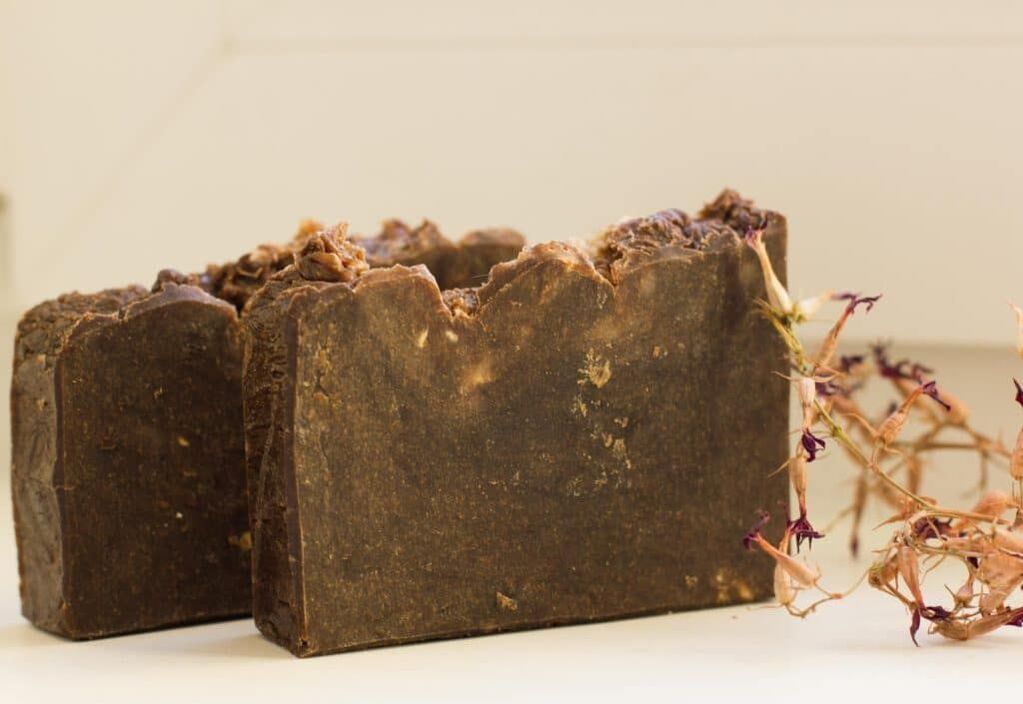
You can use tar soap, which contains 10% tar. Dissolve two tablespoons of crushed tar soap in 2 liters of hot water and soak your feet in it for 20 minutes. Then the limbs are soaped and sprinkled with baking soda. Cover the feet with a bandage, put on socks and leave overnight. In the morning, the feet are washed with water. The course is designed for one week.
Onion, garlic, lemon
You can treat fungus using the antifungal properties of onions and garlic. Vegetables crushed into pulp are applied to sore spots, tied with adhesive tape and polyethylene. Compresses remain until morning.
Lemon juice helps with the transition of the fungal process to the nail plate. Citrus is cut into slices, applied to the affected area and tied with cling film and a bandage. The course of treatment is 10 days.
Another method
Soaking in kombucha for two months helps get rid of the fungus. The liquid is boiled for an hour, filtered, then used for compresses and lotions. It is advisable to do it before going to bed, after steaming your feet in hot water with the addition of iodine or potassium permanganate.
Good results can be easily achieved if you remove the film from the kombucha, knead it and apply the resulting pulp to the sore spot for a few hours, or even better, overnight. This procedure must be repeated every day for at least a week.
A stew:
- calendula flower,
- blackberries,
- verb,
- oak bark.
Pour three tablespoons of raw materials, mixed in equal proportions, into a glass of water and boil for 15 minutes. After cooling and filtering, the decoction is used to wash the skin and apply. A bandage soaked in liquid is placed on the affected area for 20 minutes. Due to the security of the method, it can be used without restrictions.

Ammonia is used in baths for nail fungus. Add 50 ml of ammonia and 2 tablespoons of baking soda per liter of warm water. This procedure lasts for 25 minutes, after which the feet are washed with cold water and dried well.
It is difficult to achieve a permanent cure for fungus using folk remedies. Remedies at home usually reduce the severity of symptoms. If treatment is stopped, the disease may reactivate.
It is very difficult to get rid of fungus if someone in the family is sick, because with close household contact there is a very high risk of infection to all family members. Many reviews from people confirm that it is possible to cure fungus only with strict adherence to all hygiene standards and preventive therapy.
If, despite all the measures taken, it is not possible to remove the fungus, the disease develops, captures more new areas, and a secondary infection in the form of an ulcer occurs, you must see a doctor for qualified help.
















